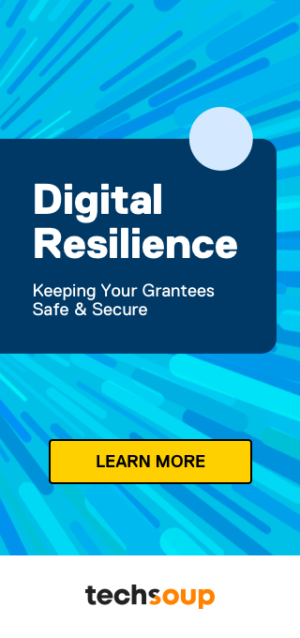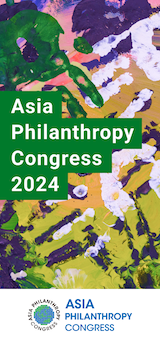What happens when funders cede power to young people, to take the reins, strategise, and distribute USD 1 Million to the youth organising and activism they care about?
This is a story about power. Not about dismantling power – not even fully subverting it. This is an exploration of how we might move and shift power, and the very active reset that funders can embrace as a result.
In February of this year, 12 major children- and youth-focused donors from across the globe, gathered in Accra, Ghana, to participate in an Experiential Pooled Fund & Donor Learning Community, convened by the Children’s Rights Innovation Fund (CRIF) and We Trust You(th). Curious about the potential impact of pooling resources, of ceding power, and of moving money collaboratively; the participating funders committed to liberating the pooled resources from the adult-ism and silos that typically characterise philanthropy.
In Accra, they heard uncomfortable truths about the harm of apolitical grantmaking and the potential of youth power in decision-making. Rather than sit in a conference room and set the parameters for grantmaking, they listened and learned how young people’s expansive, urgent and creative work all too often shrinks when they encounter the norms of modern philanthropy. When typical grant structures are introduced, the space for possibilities reduces as youth activists work to ‘get it right’ and to be ‘professional’.
In this year-long courageous and collaborative space, donors will (un)learn the norms in philanthropy that have consistently failed young people. To launch this entirely new way of grantmaking– in community and in real-time– the donors penned a letter of intention to youth collaborators they had yet to meet.
The letter reads; “As we collectively launch this work in collaboration with CRIF, we remember that at the core of our collective humanity is our care for one another, trust in our collective power, and ability to find joy even in our darkest times.”
Almost as if right on target towards the end of the time together, a question was asked from a donor; ‘What exactly will we do if we’re not the ones developing the grantmaking strategies?’ It was a timely provocation that illustrated the quintessential challenge of shifting power for the power shifter – ‘what do I do now?’
In philanthropy, we have to be cunning, strategic, and savvy in how we exercise power, how we defer power, and how we trade power. It is a muscle that we develop. It is not a checklist. It is not a formula. At no point do we get to be comfortable.
Although the time in Accra was a rich opportunity for donors to begin re-imagining their relationships with young people, what is ultimately needed is an analysis of how power moves in the lives of young people and how individuals in philanthropic institutions can be intentional about how that power is ceded, traded and moved. The ‘What’s Possible’ journey will explore how the shifting of power does not have to displace donors but instead demand they adopt an active new role.
The role of the donor in transformative participatory grantmaking is not just about passing the mic. Rather, it is the active process of aligning and allyship, of making space and creating opportunities.
We have seen some familiar trends as funders increasingly recognise the importance of shifting power to young people. First, the language of participatory grantmaking is adopted (or maybe co-opted) and the work is micromanaged with an invisible hand. Or, significant power is ceded to young people and philanthropic practitioners who feel that they have ‘finished’, step back, and watch the result of their power shifting. Finally, when encountered with the difficult decisions that can come with meaningfully engaging young people, the answer is to ‘just add more youth’. Each of these trends undermines the impact and sustainability of these efforts.
Through ‘What’s Possible’, donors and youth collaborators will walk together with a shared analysis of how power moves, to be mindful of when each defers to the traditional familiar notions of power, and when they choose to transgress. It will require them to always notice power. This unsettled, continuing negotiation might be awkward and uncomfortable as there is no solution where power is absent or where power has completely shifted from one place to another. Even if we were able to move power from one individual to another or from one small group to another, we all still exist in institutions, in societies, and with norms that fully reinforce and reward existing power dynamics. The wealthy have more power over the poor, the Global minority over the majority, the old over the young, and so it goes.
In philanthropy, we have to be cunning, strategic, and savvy in how we exercise power, how we defer power, and how we trade power. It is a muscle that we develop. It is not a checklist. It is not a formula. At no point do we get to be comfortable. We must be in constant reflection and praxis – taking the theory and understanding of power and acting from it in order to subvert it. It requires a degree of honesty, bravery, and in systems that reward efficiency, subverting power is not always efficient.
The invitation then is to actively practise ceding power, but let’s not be mistaken that we are ceding absolute power. Critical too, and living out in the ‘What’s Possible’ process, is the understanding that the young activists who, from this month, will be selected in the role of youth collaborators, will be very accustomed to working in traditional power structures. The participatory grantmaking journey is as much for them to unlearn and unravel the harm they have experienced in philanthropy, and to learn how power moves so it can be subverted as they design a grantmaking strategy that fully works for young people like them. For them as power receivers, it must be for the purpose of disrupting power for the many, and in perpetuity.
For the community of ‘What’s Possible’ funders who are suspending the urge to order the young people’s steps on this journey, the youth collaborators will be their partners, their scholars, and their disruptors. Donors will build the stamina and resilience to act on their learning in long-term sustainable ways, and make meaningful shifts in their practices, their institutions, and the children’s rights sector. Their work is just unfolding, and this piece is one of a short series to invite you along with us.
Dr Ramatu Bangura is the Founding Director Children’s Rights Innovation Fund, Co-CEO We Are Purposeful. To find out more about the Children’s Rights Innovation Fund visit crifund.org. Read more on the What’s Possible initiative here and follow on CRIF socials.
This article is part of a four-part blog series exploring the possibilities of positioning young people at the forefront of funding and social change. This series is created in partnership with Purposeful. You can read the other blogs via the tag #possible.






Comments (0)